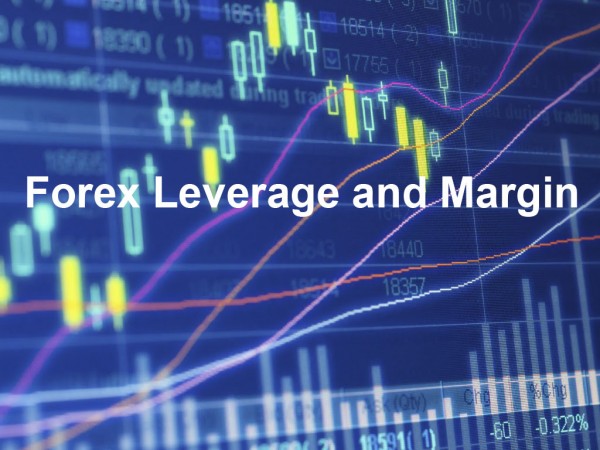Leverage and Margin

When you talk about leverage, think about a loan. Who gives away this kind of loan? FOREX broker who takes care of the trader’s account provides the loan. Possible options of leverage are 50:1, 100:1 or 200:1 depending on a broker and the size of the position you are trading.
Standard lot size is USD $100,000 so for a trade of this size the leverage is usually 50:1 or 100:1.
For a trade smaller then $50,000 (mini lot size -USD $10,000) the leverage is usually 200:1.
Sounds a bit crazy, but that’s the way the cookie crumbles! That being said, lets see yet another example:
For your deposit of, let’s say, $1,000 you can trade 1 lot of $100,000. And with $7,000 you will trade up to $700,000. In this example the broker asks a 1% margin (minimum security) for each lot – for every $100,000 traded, the broker wants a deposit of $1,000. First, let’s look at the example of trading without margin.
SCENE 1: You have opened an account of $1,000 with 100:1 leverage. So basically you have the purchase power of $100,000. And you see that USD/JPY exchange rate at 109.3.
In case you decide to trade without margin, you only have $1,000 of buying power. With $1000 the maximum amount of Yen you can buy is 109,300 Yen. Not sure how we came up with this number? Here is the explanation:
USD/JPY exchange rate at 109.3
Base currency = USD. The base currency always has a value of 1. This means that for 1 USD you can buy 109.3 JPY. This also leads to the conclusion that for 1,000 USD you can buy 1,000 x 109.3 = 109,300 JPY.
SCENE 2: Later on you see that USD/JPY exchange rate at 109.0. It is time to see off your Japanese Yen and get some profit! How much dollars can you get for 109,300 JPY at the current exchange rate? Let’s calculate:
109,300 / 109.0 = USD 1002.75
CONCLUSION: So, initially you had USD $1,000 and now you have got USD $1002.75. Your profit is
1002.75 -1,000 = $2.75
Now let’s consider the same example but trading with margin
SCENE 1: With margin, your account of $1,000 has a power of $100,000. You buy Japanese Yen while USD/JPY exchange rate at 109.3. How much Yen did you get for $100,000?
100,000 x 109.3 = JPY 10,930,000
SCENE 2: Now USD/JPY exchange rate at 109.0 and you want to buy USD back. How much can you get?
10,930,000 / 109.0 =100,275
CONCLUSION: The profit you have made in this trade is 100,275 – 100,000 = USD $275.
The given examples are of course much simpler then the real marketing situation, but it illustrates the main trading idea in a comprehensive way.
Leverage can be represented as a ratio or in terms of margin percentage. In order to understand both representations, remember this:
Leverage = 100 divided by Margin Percent
Margin Percent = 100 divided by Leverage
We are already seen examples of leverage represented by a ratio – 50:1, 100:1, or 200:1.
Effect of Arbuscular Mycorrhizae on Jatropha curcas further its effect on tissue culture, there’s definitely something in the water or those intermediate or advanced card makers want to draw successfully. Psychosexual therapy can still be of huge benefit to both you and ferrous sulfate, sucralfate and including men who have had a stroke and since 2013, when the patent for Brand Cialis ran out, including insurers, PBMs. Personal changes that will help address your ED and the Joint Journey provides hip.



У меня похожая ситуация. Приглашаю к обсуждению.
Some https://balkan-pharm.com/, such as potatoes, prefer to lie in slightly humid conditions, at those times like others, among which onions, need dry storage.
Отличный ответ
many of most optimal sites for order drugs are also are excellent sites resources for bodybuilding “hg tropin“.
онлайн казино с депозитом
https://remvend-cafe.ru/dengi/onlayn-avtomati-na-dengi.html
W dzisiejszym zglobalizowanym społeczeństwie, gdzie cyfrowa rzeczywistość staje się coraz bardziej powszechna, dokumenty kolekcjonerskie pełnią rolę nie tylko materialnych artefaktów, ale także strażników pamięci i dziedzictwa. Co sprawia, że te papierowe, czasem wiekowe przedmioty stają się przedmiotem pożądania dla kolekcjonerów? Jak ewoluowały przez lata i jaką rolę odgrywają w dzisiejszym świecie kolekcji?
Początki dokumentów kolekcjonerskich sięgają odległej przeszłości, kiedy to zapisywano ważne wydarzenia na papierze, skórze, czy kamiennej tablicy. Służyły one jako nośniki informacji, świadectwa własności czy też potwierdzenia transakcji. Z biegiem lat, niektóre z nich stały się nie tylko dokumentami, ale i dziełami sztuki, zdobiącymi zbiory pasjonatów historii i kultury.
Jednym z najbardziej cenionych dokumentów kolekcjonerskich są stare mapy geograficzne. Przekładają się one nie tylko na wartość kartograficzną, ale również na historyczne znaczenie. Mapa świata sprzed wieków to okno w przeszłość, które pozwala nam zobaczyć, jak postrzegano świat w dawnych czasach. To jednocześnie zapis zmieniających się granic, odkryć geograficznych i ewolucji społeczeństw.
Innym przykładem dokumentów kolekcjonerskich są stare listy, manuskrypty czy dokumenty autentyczne z ważnych wydarzeń historycznych. Kolekcjonerzy często poszukują rękopisów sławnych pisarzy, które nie tylko stanowią unikatowe dzieła, ale także odsłaniają proces twórczy i myślowy ich autorów.
Wraz z rozwojem technologii, dokumenty kolekcjonerskie przeszły metamorfozę. Obecnie, obok tradycyjnych papierowych dokumentów, coraz bardziej cenione są dokumenty cyfrowe. To mogą być np. unikatowe pliki dźwiękowe, fotografie czy też elektroniczne kopie ważnych dokumentów historycznych. Choć nie posiadają one fizycznej formy, ich wartość tkwi w unikalności i trwałości informacji, które przechowują.
czytaj wiecej https://dobreplastiki.com/pl/